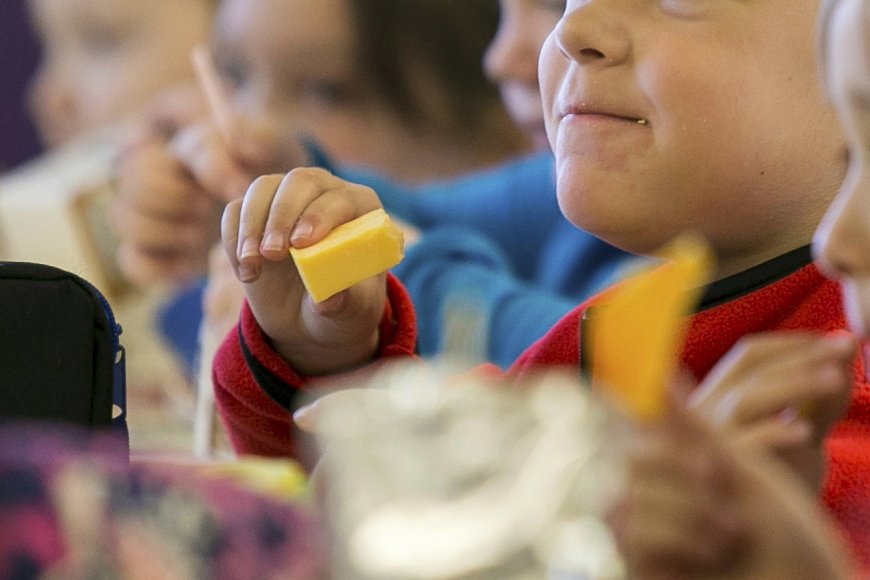La Villa ISD receives grant to support child nutrition
La Villa ISD receives grant to support child nutrition KVEO-TV

No Kid Hungry Texas Grants Support Nutrition Programs in Rural Districts

LA VILLA, Texas (ValleyCentral) — No Kid Hungry Texas has announced that it will be awarding over $270,000 in grants to support nutrition programs in rural districts across Texas.
La Villa Independent School District Receives $34,000 Grant
La Villa Independent School District is one of eight rural school districts that will receive a grant of $34,000 to expand access to food.
Importance of School Meals in Rural Communities
“School meals play a central role in ensuring Texas kids receive the nutrition they need to thrive, especially in rural communities which may have limited access to fresh, healthy foods,” said Stacie Sanchez Hare, director at No Kid Hungry Texas.
Rural Texans and Food Insecurity
No Kid Hungry Texas is a nonprofit organization aimed at combating childhood hunger. The organization reports that rural Texans display the highest level of food insecurity.
According to a study, 44% of rural respondents experienced at least one symptom of food insecurity in 2022.
Enhancing Capacity for Providing Nutritious School Meals
“By providing funding for equipment, staff training, and other program needs, we will bolster these districts’ capacity to continue providing delicious and nutritious school meals,” Sanchez Hare added.
Grant Duration
The grant will span one academic year, starting in August and ending in May.
SDGs, Targets, and Indicators
| SDGs | Targets | Indicators |
|---|---|---|
| SDG 2: Zero Hunger | 2.1: By 2030, end hunger and ensure access by all people, in particular, the poor and people in vulnerable situations, including infants, to safe, nutritious, and sufficient food all year round | Indicator 2.1.2: Prevalence of moderate or severe food insecurity in the population, based on the Food Insecurity Experience Scale (FIES) |
| SDG 4: Quality Education | 4.1: By 2030, ensure that all girls and boys complete free, equitable, and quality primary and secondary education leading to relevant and effective learning outcomes | No indicators mentioned in the article |
1. Which SDGs are addressed or connected to the issues highlighted in the article?
- SDG 2: Zero Hunger
- SDG 4: Quality Education
The article discusses the issue of childhood hunger in rural districts in Texas and the efforts of No Kid Hungry Texas to combat this issue. This aligns with SDG 2, which aims to end hunger and ensure access to safe and nutritious food for all people. Additionally, the article mentions the grant provided by No Kid Hungry Texas to La Villa Independent School District, highlighting the connection to SDG 4, which focuses on quality education.
2. What specific targets under those SDGs can be identified based on the article’s content?
- Target 2.1: By 2030, end hunger and ensure access by all people, in particular, the poor and people in vulnerable situations, including infants, to safe, nutritious, and sufficient food all year round
- Target 4.1: By 2030, ensure that all girls and boys complete free, equitable, and quality primary and secondary education leading to relevant and effective learning outcomes
Based on the article’s content, the specific targets that can be identified are Target 2.1 under SDG 2 and Target 4.1 under SDG 4.
3. Are there any indicators mentioned or implied in the article that can be used to measure progress towards the identified targets?
- Indicator 2.1.2: Prevalence of moderate or severe food insecurity in the population, based on the Food Insecurity Experience Scale (FIES)
- No indicators mentioned in the article for Target 4.1
The article mentions that rural Texans display the highest level of food insecurity, indicating a need to measure the prevalence of food insecurity in the population. Indicator 2.1.2, which measures the prevalence of moderate or severe food insecurity based on the Food Insecurity Experience Scale (FIES), can be used to measure progress towards Target 2.1 under SDG 2. However, no specific indicators are mentioned in the article for Target 4.1 under SDG 4.
4. Table: SDGs, Targets, and Indicators
| SDGs | Targets | Indicators |
|---|---|---|
| SDG 2: Zero Hunger | 2.1: By 2030, end hunger and ensure access by all people, in particular, the poor and people in vulnerable situations, including infants, to safe, nutritious, and sufficient food all year round | Indicator 2.1.2: Prevalence of moderate or severe food insecurity in the population, based on the Food Insecurity Experience Scale (FIES) |
| SDG 4: Quality Education | 4.1: By 2030, ensure that all girls and boys complete free, equitable, and quality primary and secondary education leading to relevant and effective learning outcomes | No indicators mentioned in the article |
Behold! This splendid article springs forth from the wellspring of knowledge, shaped by a wondrous proprietary AI technology that delved into a vast ocean of data, illuminating the path towards the Sustainable Development Goals. Remember that all rights are reserved by SDG Investors LLC, empowering us to champion progress together.
Source: valleycentral.com

Join us, as fellow seekers of change, on a transformative journey at https://sdgtalks.ai/welcome, where you can become a member and actively contribute to shaping a brighter future.







